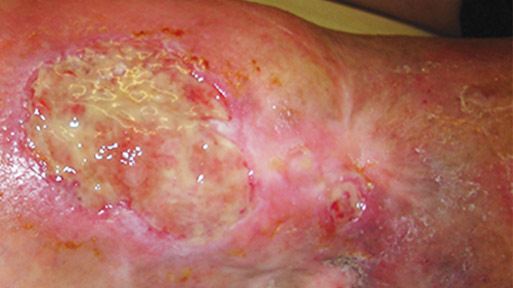It is well documented that the prevalence of venous leg ulcers (VLUs) is increasing, coinciding with an ageing population. Accurate global prevalence of VLUs is difficult to estimate due to the range of methodologies used in studies and accuracy of reporting.1 Venous ulceration is the most common type of leg ulceration and a significant clinical problem, affecting approximately 1% of the population and 3% of people over 80 years of age2 in westernised countries. Moreover, the global prevalence of VLUs is predicted to escalate dramatically, as people are living longer, often with multiple comorbidities. Recent figures on the prevalence of VLUs are based on a small number of studies, conducted in Western countries, and the evidence is weak. However, it is estimated that 93% of VLUs will heal in 12 months, and 7% remain unhealed after five years.3 Furthermore, the recurrence rate within 3 months after wound closure is as high as 70%.4-6 Thus, cost-effective adjunct evidence-based treatment strategies and services are needed to help prevent these ulcers, facilitate healing when they occur and prevent recurrence.
The impact of a VLU represents social, personal, financial and psychological costs on the individual and further economic drain on the health-care system. This brings the challenge of providing a standardised leg ulcer service which delivers evidence-based treatment for the patient and their ulcer. It is recognised there are variations in practice and barriers preventing the implementation of best practice. There are patients not receiving appropriate and timely treatment in the initial development of VLUs, effective management of their VLU and preventing recurrence once the VLU has healed.
Health-care professionals (HCPs) and organisations must have confidence in the development process of clinical practice guidelines and have ownership of these guidelines to ensure those of the highest quality guide their practice. These systematic judgments can assist in policy development, and decision making, improve communication, reduce errors and improve patient outcomes.
Read more at Journal of Wound Care







